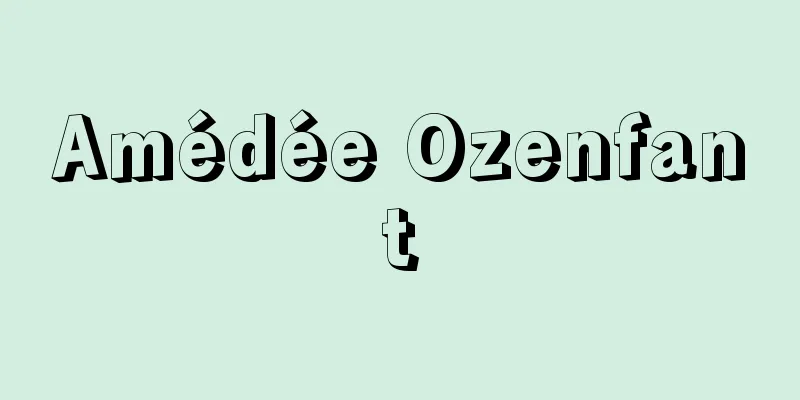Romantic music

|
The Romantic period (known as Romantik in German and romanticism in English) as a period in the history of Western music refers to the period that followed the Classical period from the early 19th century to the early 20th century, and is the period when the greatest number of works of music generally enjoyed today were produced. Romanticism, derived from the old French word romant, which meant a fantastical medieval chivalry tale, was the name of a literary movement in late 18th century German literature that was launched by writers such as the Schlegel brothers and Novalis, who rejected rational form and order and aimed for subjective, dramatic literature based on rich imagination in opposition to classicism, which idealized the art of ancient Greece and Rome. The Romantic movement, which originated in literature, permeated all fields of art as well as all spiritual activities in Europe. As E. T. A. Hoffmann claimed that music is the art of the Romantics, the romantic attitude can be clearly traced in music as well. [Hiroshi Nakano] Classical and RomanticIn the past, the Classical and Romantic periods were treated as two opposing periods in the field of music. However, the period from the mid-18th century to the early 20th century was a period of consistent tonal music. Moreover, the Romantic period followed all of the compositional techniques, forms, and musical genres pioneered by the Classical period, but only complicated or modified them. In addition, the origins of the two musical genres developed by the Romantic period, the symphonic poem and the character piece (in English, character piece in German, Charakterstück), can also be traced back to the Classical period. Therefore, the Classical and Romantic periods are two phases of a single stylistic era, and in the process of historical transition, the Romantic period added new elements to Classical music in various aspects, complicating and developing it, based on its new spiritual attitude. From this perspective, today it is often called the "Classical-Romantic period." At the same time, because the 19th century saw a variety of conflicts, including fierce debates between conservatives and reformists, attempts are being made to use a new term, 19th century music, instead of the unified term Romanticism. [Hiroshi Nakano] Changes in the musical environment and musiciansThe difference in musical environment between the Classical period, in which royalty, nobility and the upper classes were the main players in music and the royal court was the central venue for music, and the Romantic period, in which public concerts were established and an unspecified number of ordinary citizens became the decisive cause of the differences between the music of the two periods. Most composers in the Classical period were employed by the royal court and were obliged to compose all kinds of music at the time, and also worked as performers. In the Romantic period, when musicians became free and independent professionals, the division of labor between composers and performers was the first step. The emergence of virtuoso performers such as Paganini the violinist, Chopin the pianist, and Liszt the pianist promoted the virtuosity unique to Romantic music, and, together with improvements in the mechanisms of musical instruments, significantly expanded the colorful expressiveness of music and orchestras, including chromatic harmony. The existence of a composer as a cultured artist is manifested in the fusion of music with other arts, as Schumann and many other composers were also excellent writers of text. The songs from Schubert to R. Strauss, and the diverse program music with the symphonic poems invented by Liszt as its intermediate point, are representative of the vocal and instrumental music of Romantic music, respectively. At the same time, various types of absolute music, including symphonies, were also actively composed with a Romantic attitude. [Hiroshi Nakano] Synthesis and PurificationThe apex of the Romantic movement, which sought to integrate the various arts, can be seen in the music dramas, which were created as comprehensive works of art by Wagner, a superhuman figure who was a composer, conductor, poet, opera reformer, cultural philosopher, and music festival organizer. On the other hand, the purification of musical art is represented by Brahms, who believed in absolute music, Bruckner, who devoted himself to symphonies and church music, and Verdi, who continued to write operas centered on vocal music. [Hiroshi Nakano] Small and large formatsDuring the Romantic period, which was characterized by subjective emotional expression, character pieces that expressed emotions directly and concisely coexisted with huge works such as Mahler's Symphony No. 8, "Symphony of a Thousand," which lasted for an hour and a half and required 1,000 performers. [Hiroshi Nakano] Past and FutureThe Romantic period shed new light on the musical heritage of the past, with events such as Mendelssohn's revival of Bach's St. Matthew Passion (1829), the publication of the complete set of Bach's scores, and the revival of Gregorian chant and Palestrina in Catholic church music. On the other hand, it was also a time when the past and the future were intertwined, as seen in the music of Wagner, which became one of the starting points of 20th century music. [Hiroshi Nakano] The rise of nationalismThe development of songs, operas, and program music combined music with the literature specific to each country, inevitably introducing elements of folk music, and eventually national schools of music were born even in countries that were backward in terms of art music, such as Russia, Czechoslovakia, and Hungary. Even in developed countries, the stylistic characteristics of each country became more clearly defined. This diversification in each aspect is the greatest characteristic of Romantic music. [Hiroshi Nakano] "Romantic Music" by R.M. Longyear, translated by Norikazu Murai, Norio Matsumae, et al. (1986, Tokai University Press) " "Romantic Music" by J. Riedel, translated by Masasaku Fukuda and Noriko Miyamoto (1977, Ongaku No Tomosha) [References] | | | | | |Source: Shogakukan Encyclopedia Nipponica About Encyclopedia Nipponica Information | Legend |
|
西洋音楽史における時代様式概念としてのロマン派(ドイツ語ではRomantik、英語ではromanticism)は、古典派に続く19世紀初頭から20世紀初頭に至る時期をさし、今日一般に鑑賞される音楽のなかで、もっとも多くの作品が生み出された時代である。 中世の空想的な騎士物語を意味した古いフランス語のromantに由来するロマン派あるいはロマン主義とは、18世紀末のドイツ文芸で、古代ギリシア・ローマの芸術を理想とした普遍的性格を特色とする古典主義に反発して、合理的な形式や秩序を排し、豊かな想像力による主観的な劇的な文芸を目ざしたシュレーゲル兄弟や、ノバーリスをはじめとする作家たちが掲げた文芸運動の名称である。文芸に端を発するロマン主義運動は、芸術の各分野はもちろん、ヨーロッパのあらゆる精神活動に浸透した。音楽はロマン派の芸術である、とE・T・A・ホフマンが主張したように、ロマン派的精神態度は音楽においても明白に跡づけられる。 [中野博詞] 古典派とロマン派過去においては、音楽の分野においても、古典派とロマン派は対立する二つの時代として扱われてきた。しかし、18世紀中葉から20世紀初頭に至る時期は、一環した調性音楽の時代である。しかも、古典派が開拓した作曲技法、形式、曲種を、ロマン派はすべて踏襲しており、複雑化あるいは変化発展させたにすぎない。また、ロマン派が開発した交響詩と、キャラクター・ピース(英語ではcharacter piece、ドイツ語ではCharakterstück)とよばれるピアノ小品の二つの曲種も、その源泉は古典派にさかのぼる。したがって、古典派とロマン派は一つの様式時代の二つの局面であり、その歴史的変遷過程においてロマン派は、その新しい精神的姿勢から古典派音楽にさまざまな面で新しい要素を加えて複雑化し、発展させていったのである。このような観点から、今日では「古典派・ロマン派の時代」とよばれる場合が多い。同時に、19世紀においては保守派と革新派の激論をはじめ多彩な対立がみられるため、統一的なロマン派という名称にかわって、19世紀音楽という新しいとらえ方も試みられている。 [中野博詞] 音楽環境と音楽家の変化王侯貴族と上流階級が音楽の担い手であり、宮廷が音楽の中心的な場であった古典派と、公開演奏会が定着し、不特定多数の一般市民が聴衆となるロマン派との音楽環境の相異が、両時代の音楽の相違の決定的な原因となる。古典派時代の大半の作曲家は、宮廷などとの雇用関係にあり、当時のあらゆる曲種の作曲を義務づけられ、演奏家をも兼業した。音楽家が自由な独立した専門職となるロマン派時代においては、まず作曲家と演奏家が分業化する。バイオリンのパガニーニ、ピアノのショパン、リストに代表される名演奏家の誕生は、ロマン派音楽特有の名人芸を促進し、楽器のメカニズムの改良を伴って、半音階的和声法をはじめ、音楽の色彩的表現能力とオーケストラを著しく拡大する。 教養豊かな芸術家としての作曲家の存在は、シューマンをはじめ数多くの作曲家が優れた文章家でもあったように、音楽と他芸術との融合となって現れる。シューベルトからR・シュトラウスに至る歌曲、リストが編み出した交響詩を中間点する多彩な標題音楽は、それぞれロマン派音楽の声楽と器楽を代表する。同時に、交響曲をはじめとする絶対音楽の各曲種も、ロマン派的姿勢で盛んに作曲される。 [中野博詞] 総合と純化諸芸術の総合というロマン派運動の頂点は、作曲家、指揮者、詩人、歌劇改革者、文化哲学者、音楽祭主催者を兼ねる超人的存在であったワーグナーが完成した、総合芸術作品としての楽劇にみられる。一方、音楽芸術の純化は、絶対音楽を信奉したブラームス、交響曲と教会音楽のみに専心したブルックナー、あくまでも声楽を中心としたオペラを書き続けたベルディなどに代表される。 [中野博詞] 小形式と大形式主観的な感情表現を特色としたロマン派においては、感情を直接、簡潔に表現するキャラクター・ピースとともに、1時間半に及ぶ長時間と1000人の演奏者を必要とするマーラーの交響曲第八番「千人の交響曲」などの巨大な作品が共存した。 [中野博詞] 過去と未来メンデルスゾーンによるバッハの『マタイ受難曲』の復活上演(1829)、バッハの楽譜全集の出版、さらにカトリック教会音楽におけるグレゴリオ聖歌やパレストリーナの再興など、ロマン派時代は過去の音楽遺産に新たな光を投げかける。一方、ワーグナーの音楽が20世紀音楽の一つの出発点となるように、過去と未来が錯綜(さくそう)した時代でもある。 [中野博詞] 民族主義の台頭歌曲、歌劇、標題音楽の発展は、音楽と各国固有の文芸との結合となり、必然的に民俗音楽の要素が導入され、やがてロシア、チェコスロバキア、ハンガリーなどの芸術音楽の後進国においても、国民楽派が誕生する。また先進国においても、各国の様式的性格が鮮明化する。 こうした各局面における多様化こそ、ロマン派音楽の最大の特色である。 [中野博詞] 『R・M・ロンイアー著、村井範千・松前紀男他訳『ロマン派の音楽』(1986・東海大学出版会)』▽『J・リーデル著、福田昌作・宮本憲子訳『ロマン派の音楽』(1977・音楽之友社)』 [参照項目] | | | | | |出典 小学館 日本大百科全書(ニッポニカ)日本大百科全書(ニッポニカ)について 情報 | 凡例 |
>>: Romantic Theatre - Roman wa engeki
Recommend
Reverse dilution method
…It is extremely difficult to quantitatively sepa...
Kid (Warship) - Kid
…With the development of aircraft-derived gas tur...
Agricultural Rescue Council - Kyuunougikai
Another name for the 63rd Imperial Diet (Extraordi...
Sowing seeds - Tanemaki
Sowing crop seeds in fields or seedbeds. Broadly s...
IAAF - IAAF
International Association of Athletics Federation ...
Reich
American composer. Also known as Reik. Born in New...
Dutch War
The French King Louis XIV's war of aggression...
Polycarbonate
Abbreviated as PC, it is a polyester made from ca...
Carter, TF - Carter
…But there is no evidence to back this up. TF Car...
Orthogonal
(1) When two lines l and l ' intersect in a pl...
Indian licorice (English spelling)
…The bright red beans are used for necklaces and ...
Report of the United States Educational Mission
...The traditionally privileged concept of "...
Polyether - Polyether (English spelling)
A general term for polymers with an ether bond - ...
Whitman, Walt(er)
Born May 31, 1819 in West Hills, New York [Died] M...
Related Tree Law - Kanrenjumokuho
...It is also a method to analyze whether the goa...









